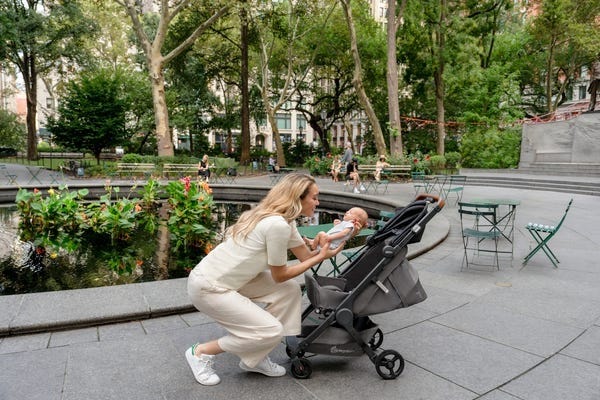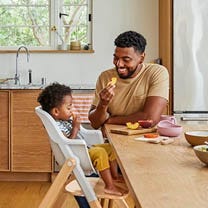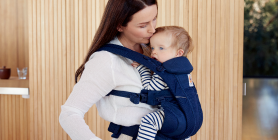Handicapped and crippled used to be terms for the disabled and now "Special Needs has become an umbrella underneath which a staggering array of diagnoses can be placed. Children with special needs may have mild learning disabilities or profound mental retardation; food allergies or terminal illnesses; developmental delays or serious psychiatric problems. (Terry Mauro, About.com) In almost every community in the United States there are parent support groups and other community organizations directly involved in providing services to families with the aim of achieving full inclusion in the social and educational life of the community for special needs children. Easter Seals www.easterseals.com is the leading non-profit provider of services for individuals with autism, developmental disabilities, physical and mental disabilities and other special needs. It was founded in 1919 in Ohio by Edgar "Daddy Allen, a man who saw that children with disabilities were often hidden from public view. In almost 90 years Easter Seals has influenced the lives of 54 million Americans. One of the conditions that deserve education is Down syndrome. Currently with the increase of premature births and more women having babies later in life, the incidents of developmental delays and Down syndrome are on the rise. Down syndrome is the most commonly occurring genetic condition. One in every 733 live births is a child with Down syndrome representing approximately 5,000 births a year. Most children with Down syndrome are born to women younger than 35 years old simply because younger women have more children. Research is making great strides in identifying the genes on chromosome 21 that cause the condition's characteristics and the full educational potential of people with Down syndrome is still being discovered. How many parents of special needs children know of the benefits of babywearing? In 1985 Dr. William Sears and his wife Martha began their personal study on the beneficial effects of babywearing on babies and their parents. They noticed that cultures throughout the world carried their babies in slings and heard parents in their practice say, "As long as I carry my baby she's content . The Sears raised eight children, among them a Down syndrome boy, and together introduced this style of parenting. After 30 years practicing pediatric medicine they have answered questions from thousands of parents and millions more have sought advice through their more than 40+ books, articles and appearances. www.askdrsears.com The thesis of this ancient tradition is that biologically babies need to be carried in order to thrive. Research shows that the simulation of constant contact helps babies sleep more peacefully, nurse better, gain weight better, enjoy better digestion, and enjoy positive physical and emotional advantages for both the parent and child. Here are two testimonials from mothers who used a carrier with their Down syndrome babies that illustrate the benefits:
"Hi! Just to let you know that my baby girl (we named her Christa Joelle) is now 3.5 months old and happy to share that despite her having Down Syndrome we've been babywearing her since she was just 8 weeks old ~Jennifer
"I have three boys and have been wearing my babies for over 11 years. Keeping my babies close to me for easy access to nurse and comfort was very important to me as a parent. I must say, I never felt like I had children who cried all the time or where just unhappy. I totally met their needs by wearing them. My 3rd son Sam was born with Down syndrome. I treat Sam no different than my other children with the exception I had to make a few modifications with my babywearing because of his low tone. One of my favorite ways to carry Sam is on my back. I reviewed all of my carriers with Sam's Physical Therapist to find the carrier that gives Sam the most support through his bodice, allows hip flex and he can move his arms freely to use his "Sign Language" while on my back. It's funny; I can feel him signing sometimes on my neck. Sam is now 3 1/2 yrs old and weighs 29lbs and is 33" long. Although Sam can walk, he tires very easily, so my carrier is always in my reach. This soft structure carrier is a win win for me, Sam and his therapy team. I can't imagine any other way of parenting. ~Holly Pennell-Salegna, CLC, HBCE Certified Lactation Counselor
Today nearly nine million children in the United States have special health care needs touching one in every five families. Individual mothers have made big differences in how these children are perceived. Eunice Kennedy Shriver is an example of what one woman can do. She began her journey to improve the health and well-being of people with disabilities in the late 50's and early 60's. She believed, "Every person, regardless of whatever different abilities they may have, can contribute, can be a source of joy, can beam with pride and love. This calling led to her creation of the Special Olympics and proved that the disabled could have their own sports events. Upon her death in 2009 the NIH was renamed the "Eunice Kennedy Shriver National Institute of Child Health and Human Development . This tribute to one woman who made such a difference is an inspiration for each of us. Love and joy are transmitted from one person to the other no matter what abilities or disabilities we have. To quote Edgar "Daddy Allen, "We have but one life to live. We get nothing out of that life except by putting something into it. To relieve suffering, to help the unfortunate, to do kind acts and deeds is after all, the one sure way to secure happiness or to achieve real success. Your life and mine shall be valued not by what we take…but by what we give. So let us ask, "What contribution might we make to a child with special needs that we might equally beam with pride and love?
Emotional Benefits of Getting Outside
Spending time in nature with your baby can strengthen the bond between you. The simple act of holding your baby close, feeling their warmth, and sharing new experiences together can create strong emotional connections. It’s also a wonderful way to reduce stress and improve your mood. When my littles were extra fussy, I’d take a walk around the neighborhood. Even though I don't live in an area with trails and surrounded by nature, simply behind outside changed everything. A little vitamin D does wonders!
Cognitive Development
Nature is a sensory wonderland for babies. The different sights, sounds, and smells can stimulate your baby’s senses and promote cognitive development. Watching leaves rustle, hearing birds chirp, and feeling the texture of a tree bark can all contribute to their learning and development.
All About Baby Carriers for Nature Adventures
Choosing the Right Baby Carrier
When it comes to selecting the best baby carrier for summer adventures, there are several options to consider.
Types of Baby Carriers:
- Wraps: Perfect for newborns, providing a snug and secure fit.
- Slings: Ideal for quick and easy use, offering good ventilation.
- Soft Structured Carriers: Versatile and comfortable for both parent and baby, suitable for longer trips.
Factors to Consider:
- Baby’s Age and Weight: Ensure the carrier is appropriate for your baby’s size and weight. For example, Ergobaby’s Embrace Newborn Carrier is perfect for the fourth trimester where baby is small and you’re looking for an easy way to stay close. As they grow, you’ll want to upgrade to an all-position carrier that’s meant for growing babies.
- Parent’s Comfort and Ergonomics: Look for carriers with padded shoulder straps and lumbar support if you’re planning on longer outings.
- Ease of Use: Choose a carrier that is easy to put on and take off.
- Climate and Breathability: Opt for carriers made of breathable fabrics to keep you and your baby cool in hot weather.
Safety Tips:
- Proper Positioning: Ensure your baby is seated correctly, with their legs in an "M" position and their head should be close enough to kiss.
- Checking for Wear and Tear: Regularly inspect your carrier for any signs of damage.
- Ensuring Adequate Support: Make sure the carrier provides proper support for your baby’s head and neck.
Exploring Nature with a Baby Carrier
Ideal Spots for a Nature Walk with Baby
- Parks and Gardens: Great for leisurely walks and picnics.
- Nature Trails and Forests: Perfect for more adventurous outings.
- Beaches and Lakesides: Wonderful for enjoying the water and sand, with the right carrier.
Activity Ideas
- Hiking: Enjoy a scenic hike with a hiking baby carrier that offers support and storage.
- Bird Watching: Use your carrier to keep your baby close while you explore and observe wildlife.
- Picnics: A carrier can free up your hands, making it easier to carry picnic supplies.


Advantages of Using Strollers for Nature Adventures


While baby carriers are fantastic for mobility and closeness, depending on the adventure of choice you might want to be a stroller along too.
There are a LOT of baby stroller options on the market. So we understand how confusing it can be to choose the one that’s right for your family. Not only are there a variety of brands, but a variety of strollers that serve different purposes.
There are a few types of strollers on the market:
- Full-sized stroller: This is typically the stroller parents thing of buying for all its versatility.
- Lightweight or umbrella stroller:These compact strollers are perfect for on-the-go adventures.
- Jogging stroller: Designed for parents who want to combine fitness with outdoor adventures.
- Double stroller: Designed for parents with multiple kids, especially twins.
- Car seat carrier: These strollers connect to a specific car seat. We don't typically recommend these as they can be unsafe for baby and uncomfortable for parents who are pushing.
Learn more about the types of strollers and which one would be best for you.
Benefits of Bringing a Stroller
- Storage Space for Gear: Ample room for carrying all your essentials like a diaper bag, beach toys and more.
- Shade and Weather Protection: Built-in canopies to shield your baby from the sun when they are lounging.
- Options: If you have more than one kid, you can stroll with one and carry the other. Or, if you’re getting warm or your little one is getting fussy, you can switch up their position from stroller to carrier or vice versa.
Safety Tips for Strollers
- Ensure your stroller is in good working condition. Make sure buckles are still buckling and that there are no rips or holes that could compromise your baby’s safety.
- Use sunshades or bug nets to protect your little one’s skin.
- Securing the baby properly: always buckle up your baby for safety even if you think they are old enough to go without the buckle.
Combining Baby Carriers and Strollers
For the ultimate flexibility, consider using both a baby carrier and a stroller on your outings.
Combining both options allows you to adapt to different situations. Use the carrier for more rugged trails and switch to the stroller for smoother paths or when your baby needs a nap.
Transition Tips
- Smooth Transitions: Plan stops where you can easily switch from carrier to stroller.
- Pack Light: Only bring essentials to make transitions easier.
Tips for a Successful Adventure
Planning Ahead
- Route Planning: Choose baby-friendly trails and parks. Check local mom groups or outdoor groups and get recommendations for the best outings for kids.
- Check Weather Conditions: Avoid extreme heat or unpredictable weather. Even with our most breathable carriers, when it’s hot, it’s hot. And having two bodies against each other in the heat will be naturally hot and sticky already.
- Packing Checklist: Include diapers, snacks, water, sunscreen, and a first-aid kit. These all-position carriers have storage pockets where you can fit some of the items easily!
- Stay Hydrated and Nourished: Pack healthy snacks to keep energy levels up and bring plenty of water for both you and baby.


Summer adventures with your baby are a wonderful way to create lasting memories and enjoy the beauty of nature together. From baby carriers to strollers, Ergobaby products are designed to provide comfort and ease for both you and your little one. So, gear up, get outside, and explore the world with your baby by your side.
Ready to embark on your own summer adventures? Check out Ergobaby’s range of baby carriers and strollers to find the perfect match for your family’s needs. Visit our website today and start planning your next outdoor excursion!



























